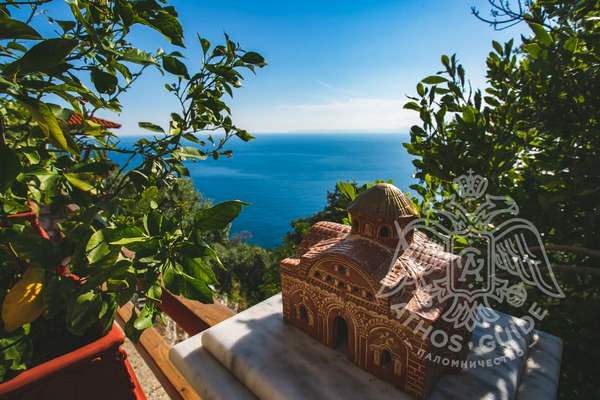 A large number of elaborate objects and miniature artworks are kept in Mount Athos. Many of them remain unknown to the public. Although studies are often made on the Athonite painting and architecture, small sculptures and the various carved surfaces that adorn the buildings of the Athonite state are not as popular.
A large number of elaborate objects and miniature artworks are kept in Mount Athos. Many of them remain unknown to the public. Although studies are often made on the Athonite painting and architecture, small sculptures and the various carved surfaces that adorn the buildings of the Athonite state are not as popular.
Miniatures and Other Art Objects
The miniature sculptures kept in Mount Athos are divided into two major categories, wood carvings and those created from precious and semi-precious stones. The wood carvings are currently made by the monks. They are used in the decoration of the monasteries, while some of them are also given for sale. Regarding sculptures made of precious and semi-precious stones, these are usually considered as historical relics.
In the Holy Monastery of Vatopaidi there is a 16th century icon of Saint George carved in yellow agate. The Holy Grail of the monastery is also carved, it has a gilded silver base and two handles. It is a particularly interesting object, given the hard period in which it was made. On the base of the chalice there is a relief representation of the hierarchs. The monogram of the donor, the ruler Manuel Katakouzenos, is also embossed on the base.
In the Holy Monastery of Hilandar there is a series of carved objects dating back to the 13th century. These include a cross with an amethyst base.
In the Holy Monastery of Great Lavra there are two icons, one of the Virgin Mary and one of Saint George, which date back to the 11th century. They are both carved in soapstone. A carved representation of the twelve great feasts, dating from the 12th century, is kept in the Holy Monastery of Vatopaidi.  The Transfiguration of the Lord, carved during the same period, is also depicted on a precious stone and is kept in the Xenophontos Monastery.
The Transfiguration of the Lord, carved during the same period, is also depicted on a precious stone and is kept in the Xenophontos Monastery.
The so-called "Poulcheria Disc", which is kept in the Xeropotamou Monastery, is an object of great historical and archaeological value. It is made of serpentine and is considered to be made much earlier than the silver cover, the creation of which is estimated to have taken place during the 18th century.
In the central circular space, the Virgin Mary is depicted with raised hands, while the Divine Infant is represented at the height of her breast. On either side of Theotokos there are the archangels Gabriel and Michael. The clergy is also depicted gathered around the altar, while the last outer part is decorated with angels and saints worshipping the Virgin Mary.
A great icon of the Crucifixion is kept in the Dionysiou Monastery. It is carved on a slab of ivory and dates back to the 10th century. The same material is used in a chalice of the Holy Monastery of Hilandar that dates back to the 14th century. According to the Athonite tradition, this chalice was donated by Stephen Dusan himself.
The porcelain plaques of the Iviron Monastery, which are placed above the entrance to the nave of the Katholikon, are decorated with elaborate designs. Among others, there are represented red tulips, white flowers and other floral designs.
Concluding, Mount Athos has a large number of wooden carvings, which are traditionally produced in the monasteries of the Athonite state. Among them, the surface of the psaltery of Dionysiou Monastery is of great interest, since it is adorned by one of the oldest wood carvings of the peninsula. It was carved during the 13th century and it is covered with multi-faceted representations of the Old and New Testaments. In particular, it is estimated that 220 faces are carved on it.
Woodcarving is often applied to small surfaces of only a few square centimetres. Its development is due to the easy access to the material, since, unlike precious stones, wooden surfaces were always easy to find in the monasteries of Mount Athos.

